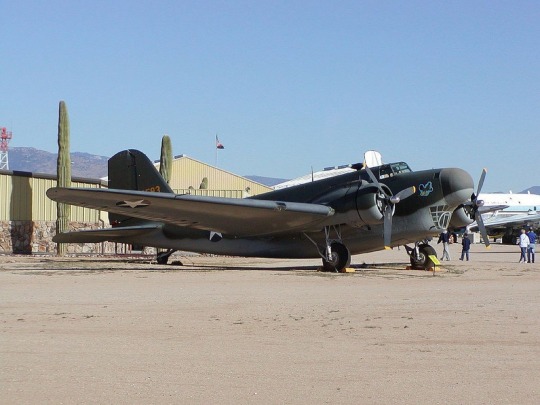#douglas b-18 bolo
Explore tagged Tumblr posts
Text

Gros plan du nez du bombardier Douglas B-18 Bolo exposé au musée national de l'US Air Force – Dayton – Ohio – États-Unis – 27 juin 2014
©Chris Usrey
#WWII#ww2#aviation militaire#military aviation#bombardier#bomber#bombardier lourd#heavy bomber#douglas b-18 bolo#b-18 bolo#b-18#national museum us air force#dayton#ohio#états-unis#usa#27/06/2014#06/2014#2014
90 notes
·
View notes
Video
Douglas B-18 Bolo seen from below by TK622 Via Flickr: A B-18 Bolo of the 88th Reconnaissance Squadron, 7th Bomb Group
#Douglas#B-18#Bolo#WW2#Inter#War#Pre#World#Two#bomber#airplane#aircraft#us#army#air#corps#force#american#flight#flickr
18 notes
·
View notes
Text
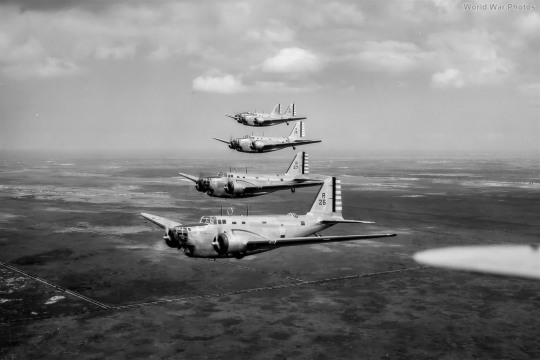
Douglas B-18 Bolo. 21st Reconnaissance Squadron. Nr Langley. April 1940
66 notes
·
View notes
Text

A Douglas B-18 “Bolo" bomber at Barksdale Field, Louisiana circa 1941. A mid-1930s design, the Bolo was approaching obsolescence by WW2 with better medium bombers just entering service. Original Kodachrome photo/slide. B-18s were deployed as transports and maritime patrol aircraft during the war though.
68 notes
·
View notes
Text
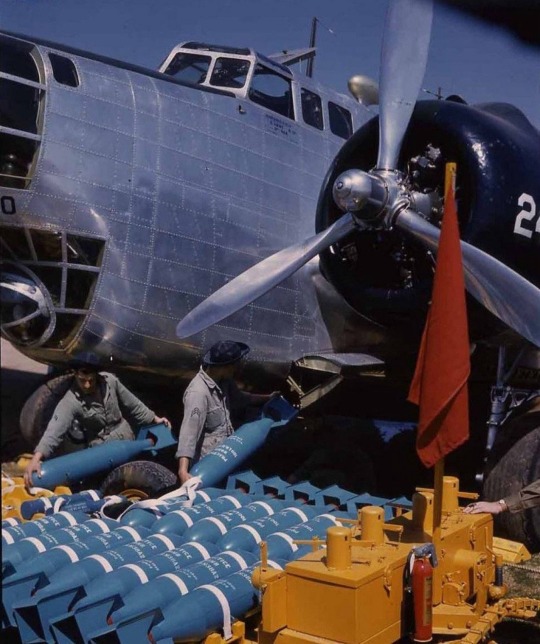
Loading bombs into a Douglas B-18 Bolo
@ron_eisele via X
30 notes
·
View notes
Photo






Douglas B-18 Bolo is an American medium bomber which served with the United States Army Air Corps and the Royal Canadian Air Force during the late 1930s and early 1940s. The Bolo was built by the Douglas Aircraft Company, based on its DC-2.
69 notes
·
View notes
Text
Inspection of the Douglas B-18 Bolo bomber

8 notes
·
View notes
Photo
Douglas B-18 Bolo

Mechanics work on the engine of a B-18 at Barksdale Field, Louisiana, summer 1941
147 notes
·
View notes
Photo
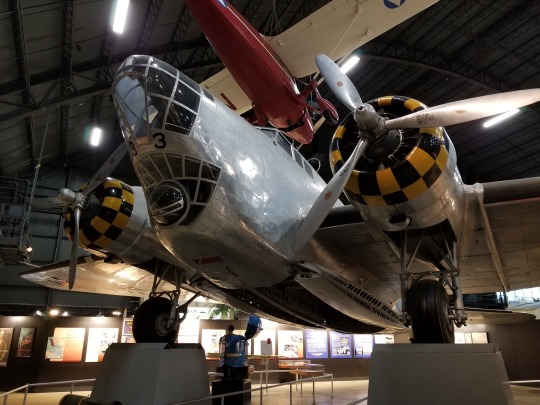
Douglas B-18 Bolo, I’d love to have seen one fly. National Museum of the United States Air Force.
84 notes
·
View notes
Video
Douglas B-18 Bolo by Willard Womack Via Flickr: The B-18 evolved from the Douglas DC-2. Many were destroyed at both Pearl Harbor and in the Philippines on seven December 1941. The old cars are not bad either. This is March Air Force Base California, 5 May, 1941.
75 notes
·
View notes
Text

-An F-4S painted in the Heater-Ferris scheme in 1983. | Photo: Keith C. Svendsen
FLIGHTLINE: 138 - HEATER-FERRIS CAMOUFLAGE
Tested by the US Navy and Air Force during the 70s and 80s, the Ferris and Heater-Ferris schemes sought to optimize the effectiveness of visual camo.
Carlisle Ferris, who goes by his middle name Keith, was born on 14 May 1929 in Honolulu while his father was stationed at Luke Field, Pearl Harbor. His father was then transferred to Kelly Field, Texas as a flight instructor before being moved again to March Field, California. There he was treated to a flight in a Douglas B-18 Bolo, which ignited a life-long fascination with aviation.
After WWII, Ferris enrolled in Texas A&M's aeronautical engineering program with the aim of getting commissioned in the USAF. When he found out that he was medically unable to become a pilot, he transferred to George Washington University to study anatomy and figure drawing. In 1951 he moved to St. Louis and worked as a contactor producing artwork for USAF training manuals. When the USAF closed the operation in 1956, Ferris moved to NYC to become a freelance artist for the aerospace industry, as well as participating with the Air Force Art Program. This program allowed him to fly on numerous USAF aircraft from the late 50s through to the 1990s, and in locations from Thailand to the Balkans. Ferris was one of the the program's most prolific artists, producing 62 paintings, along with two giant murals for the Smithsonian Institution's Air and Space Museum: "Fortresses Under Fire", which depicts the B-17 'Thunderbird' during its 70th mission, and "The Evolution of Jet Aviation", which is exactly what you'd think it is.

-In this 2005 photo, Keith Ferris stands before his mural “Fortresses Under Fire” at the National Air and Space Museum in Washington, D.C. | MarkBennett13
APPLIED THEORIES
Seeking to combine his knowledge of aircraft and his artistic talent, Ferris went on to develop and patent several camouflage ideas, including painting a false canopy on the bottom of an aircraft to confuse opponents, and another involving asymmetrical, splintered patterns of gray. Another change was reducing the size of aircraft marking, as well as making them gray, black or white.

-A Republic A-10 Thunderbolt II with a false canopy on the underside. | Photo: USAF
The Ferris scheme was applied to several early F-14s and F-15s for testing, with mixed results.

-A painting guide for a model F-14, showing the splintered pattern of Gunship Gray, Dark Gull Gray and Gull Gray. | Illustration: Don Color

-An F-14 painted in a Ferris scheme. | Photo: US Navy

-Two Farris painted F-14s deployed on a carrier. | Photo: US Navy

-Painting guide for a USAF F-15 in a different scheme of Dark Gull Gray, Gull Gray and Camouflage Gray. | Illustration: Don Color

-An F-15 painted in the above scheme. | Photo: USAF
Later, Lt Commander Chuck "Heater" Heatley of the Naval Fighter Weapons School ("Top Gun") made some changes to the basic Ferris scheme, simplifying the pattern and running the various shades of grey across the entire aircraft. Two F-4S squadrons adopted the Heater-Ferris scheme, VF-301 ("Devil's Disciples") and VF-302 ("Stallions").

-One of the VF-301 F-4s in the Heater-Ferris scheme. | Photo: Keith C Svendsen
Experiments with the Ferris and Heater-Ferris schemes proved that they did work at reducing the range at which an aircraft could be seen, as well as disguising the direction of travel, but the usefulness of visual camo was being deemphasized in an age of radar guided BVR missiles, though the F-15 and F-16 have worn other schemes influenced by Ferris.

-A USAF F-16 showing multi-shade pattern camouflage, influenced by Ferris. | Photo: USAF
Now retired, Ferris and his wife operate a small online business, offering his original art and prints of his work for sale.
#airplanes#aircraft#airplane#aviation art#aviation history#avgeek#aviation#cold war history#coldwar#cold war#usaf#us navy#keith ferris#heater ferris camouflage#f14tomcat#f14#mcdonnell douglas f15#boeing f15#f15#grumman f14
167 notes
·
View notes
Photo
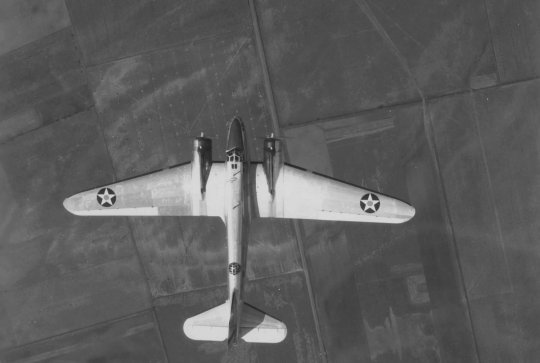
Vue aérienne d'un bombardier lourd Douglas B-18 Bolo – Mi 1930's
©United States Air Force
#Avant-guerre#Pre-war#Armée de l'Air américaine#United States Army Air Corps#USAAC#Aviation militaire#Military aviation#Bombardier#Bomber#Bombardier lourd#Heavy Bomber#Douglas B-18 Bolo#Douglas B-18#B-18#Bolo#1930's
92 notes
·
View notes
Photo

Douglas B-18 Bolo
83 notes
·
View notes
Photo

Douglas B-18A Bolo. At rest at an airfield in Panama, 1943. First flew 1935. Designed to replace the Martin B-10 and based on the DC-2. 350 were built
43 notes
·
View notes
Photo









Douglas B-18 (DB-1) was a military version of the Douglas DC-2 designed to meet the requirement for a coastal-defense, multi-engine bomber. It was designed for a USAAC competition, announced on August 6, 1934, to find a modern replacement for the assorted twin-engine Keystone biplane and Martin B-10 bombers. Douglas was awarded an initial order for 133 aircraft in January 1936 and the DB-1 was designated the B-18. The decision was widely criticized at the time, as the B-18 was hopelessly outclassed by the time World War II began, but the performance of the early B-17 was also lacking and had to go through major modifications, before it became one of the most effective bombers of the war. Despite the limitations of the B-18, it allowed for training of multi-engine pilots that would be sorely needed when the B-17 finally did emerge as the weapon of choice for strategic bombing.
42 notes
·
View notes
